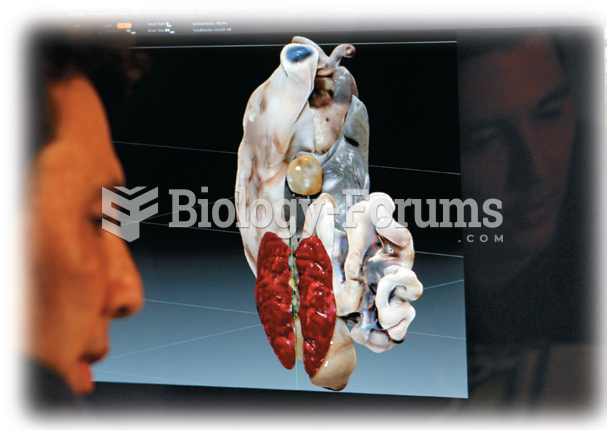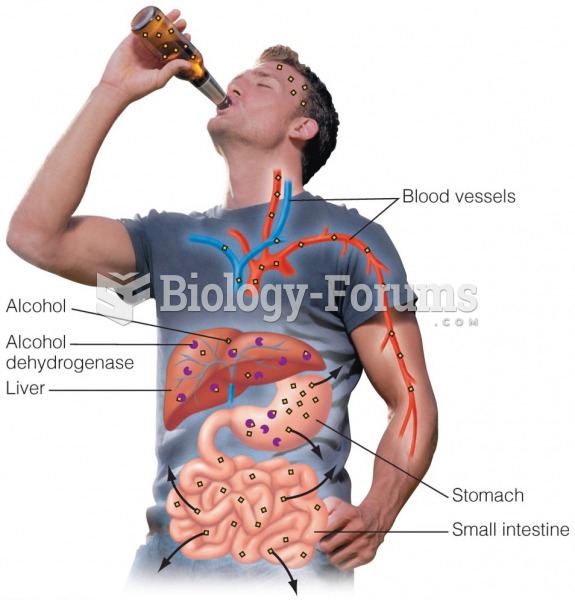|
|
|
Chronic marijuana use can damage the white blood cells and reduce the immune system's ability to respond to disease by as much as 40%. Without a strong immune system, the body is vulnerable to all kinds of degenerative and infectious diseases.
The longest a person has survived after a heart transplant is 24 years.
The cure for trichomoniasis is easy as long as the patient does not drink alcoholic beverages for 24 hours. Just a single dose of medication is needed to rid the body of the disease. However, without proper precautions, an individual may contract the disease repeatedly. In fact, most people develop trichomoniasis again within three months of their last treatment.
Calcitonin is a naturally occurring hormone. In women who are at least 5 years beyond menopause, it slows bone loss and increases spinal bone density.
The heart is located in the center of the chest, with part of it tipped slightly so that it taps against the left side of the chest.
 The fact that a mother works outside the home has no negative effect on the well-being of her child ...
The fact that a mother works outside the home has no negative effect on the well-being of her child ...
 The microchip is transforming our lives—the way we shop, spend our leisure, relate to one another, ...
The microchip is transforming our lives—the way we shop, spend our leisure, relate to one another, ...
 A typical electric motor-driven AIR pump. This unit is on a Chevrolet Corvette and only works when ...
A typical electric motor-driven AIR pump. This unit is on a Chevrolet Corvette and only works when ...




